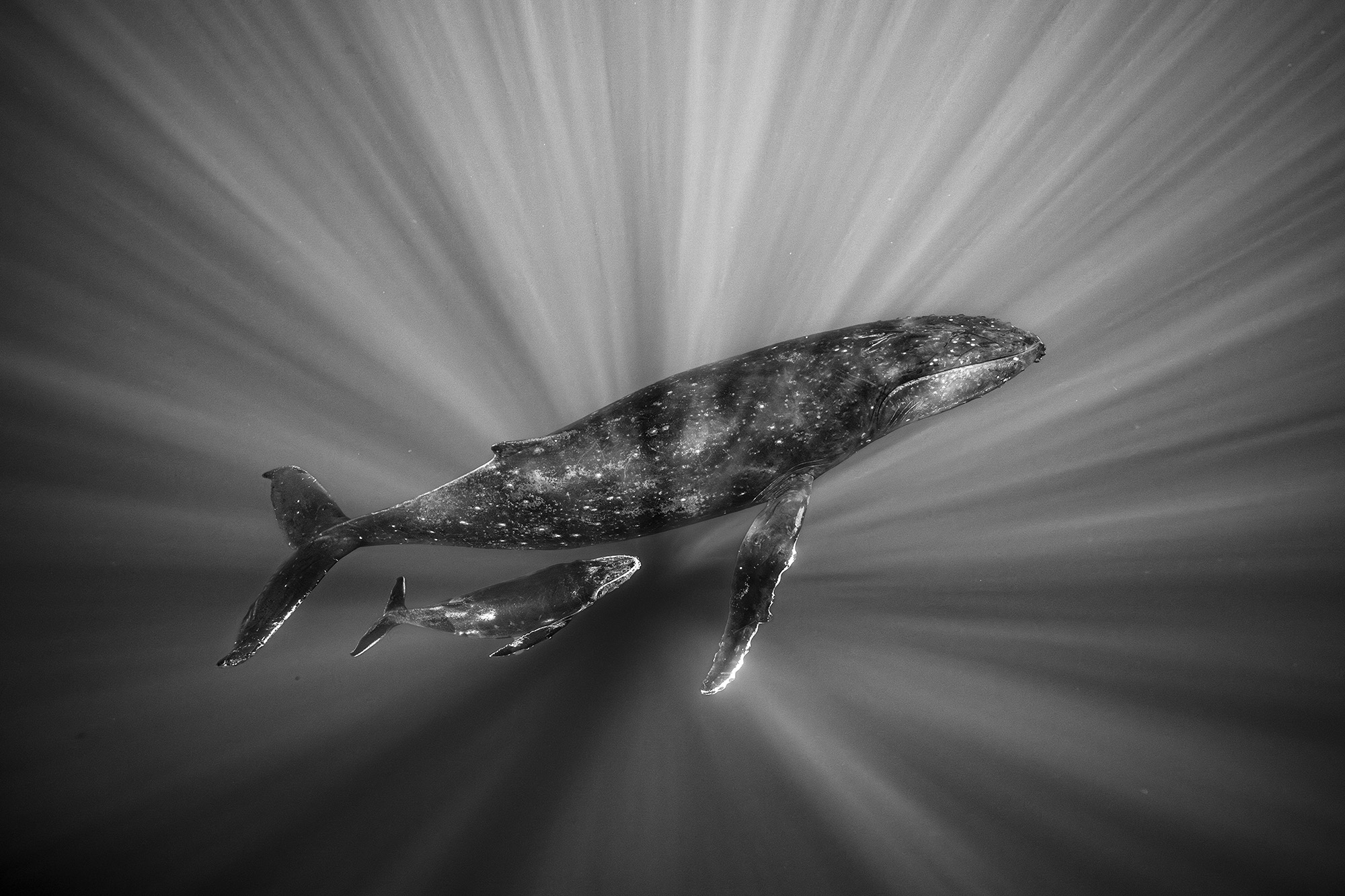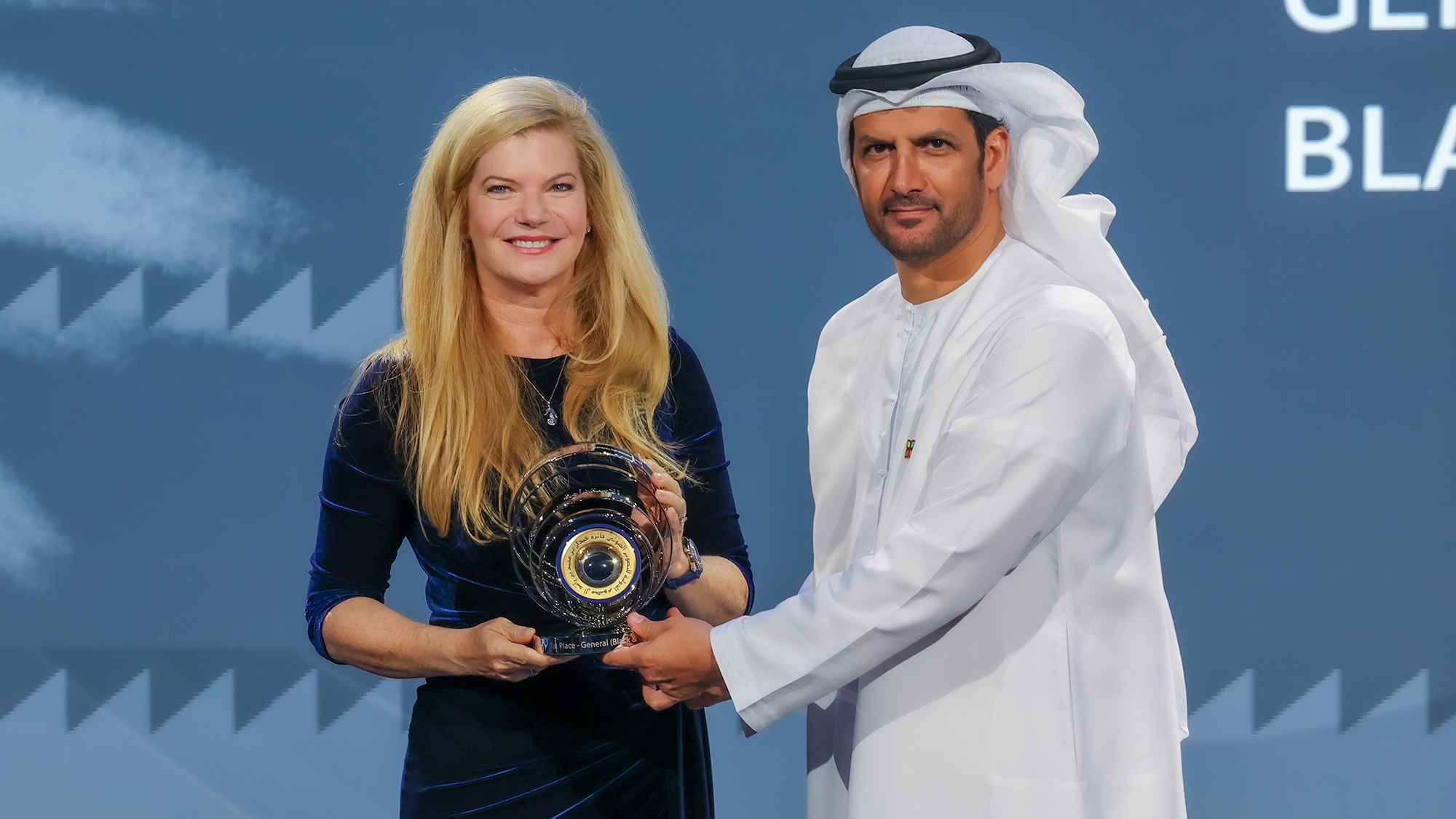"Two humpback whales literally came right up underneath me and one was looking straight at me as I took this photo"
Renee Capozzola’s incredible black-and-white image of a humpback whale and calf won the HIPA General Category (black and white). Here’s its story…

Renee Capozzola’s (AKA @rcapozzola) incredible image of a humpback whale and its calf, won the Hamdan International Photography Award’s (@hipaae) General (black and white) category in the 13th season of HIPA, themed ‘Sustainability’. The image was captured on a Canon EOS 5D Mark IV and Canon EF 16-35mm f/2.8L III USM, safe within a Seacam underwater housing.
I sat down with Renee at the HIPA 2024 awards ceremony in Dubai, where she discussed with me the image’s incredible story.
- Do you have an image that should be Photo of the Day? Send your image to: digitalcameraworld@futurenet.com for the chance to be featured.
“I have a bit of an unusual path – I actually started scuba diving first,” Renee told me, “that was about 20 years ago. I started taking pictures more as a hobby, and over time, my passion and enthusiasm for photography itself really grew, with all of the amazing animals and green environments that I was seeing underwater.
“So I started to work on my photography and it came together over the last six to eight years. I really enjoy underwater environments, and am really passionate about marine conservation.”
Remarkably, this is the first time Renee has entered HIPA. She attempted to do so last year, but missed the deadline. She was surprised to find she could only enter one photo per category, so she spent a long time considering her entry.
She explained her choice: “I was really excited to enter the whales because I've been taking photographs of humpbacks in French Polynesia for about 10 years. And it's very rare that you have a calm day with bright sunlight and rays like that in the water and actually have whales around at the same time. So to be able to photograph the mom and the baby together with that bond and in those conditions was very, very unusual, a very rare event.”
The photograph was captured off the main island of Tahiti in October 2023. Renee explained that the whales migrate from Antarctica to French Polynesia to mate and give birth. Her first encounter with the whales was as part of a small group on a boat. Once the guide deemed it safe enough, they entered the water. “The rule there is that you have to be at least a hundred meters away so we swam quite a far distance and approached the whales. Once they came into view we got ready to take the photographs. The calves are often very curious and this particular calf and mom were just playing together and they actually came closer to us.”
Get the Digital Camera World Newsletter
The best camera deals, reviews, product advice, and unmissable photography news, direct to your inbox!

The pair of whales had dived, but the water was so clear that Renee estimates you can still see them at a depth of 30 to 40 meters. She got her chance when they decided to surface again. She said: “They literally came right up underneath me. Normally you learn in underwater photography that you always shoot upwards. That's the number one rule of underwater photography, but you can break those rules for certain exceptions and for this particular image I shot straight down because they were coming right up underneath me.
“That way I could utilize the contrast and the brightness of the sun's rays, which framed the whales really nicely.” Renee used that contrast to her advantage by performing a mono conversion, which she says ”brought out the natural contrast of the image.”
And if the image isn’t jaw-dropping enough, there’s a hidden detail you might have missed. “One thing that you don't see in the image, but you can see in the raw file, is that the whale is looking at me. As a human being to be in the water with such a majestic and giant creature and see it looking at you… it's not like they're going to bump into you, they're watching you and they're very smart and they'll come very close and they will know where you are and they'll be able to maneuver around you. It's quite amazing.”
Only a light touch was required to edit the image. Renee explained that the clear water avoided the need to clone out the hundreds of particles that can often affect underwater imagery. She says: “This image was captured pretty much full-frame, cropped to maybe 5%. The main editing I did was the conversion to black and white and that requires a little more contrast to emphasize the light and the dark tones in the photo, which give it more of an artistic feel I think.”
For more information on HIPA, visit the competition's website.
Check out previous Photo of the Day images, and the stories behind them.
If you have an image you'd like us to consider for Photo of the Day, email it to us at digitalcameraworld@futurenet.com
You might also like...
If you're seriously into underwater photography, check out the best underwater housings for cameras.
If you'd like to get into underwater photography, but don't want to spend too much, take a look at the best waterproof camera.
And if you're a general wildlife photography enthusiast, check out the best camera for wildlife photography.

Niall is the editor of Digital Camera Magazine, and has been shooting on interchangeable lens cameras for over 20 years, and on various point-and-shoot models for years before that.
Working alongside professional photographers for many years as a jobbing journalist gave Niall the curiosity to also start working on the other side of the lens. These days his favored shooting subjects include wildlife, travel and street photography, and he also enjoys dabbling with studio still life.
On the site you will see him writing photographer profiles, asking questions for Q&As and interviews, reporting on the latest and most noteworthy photography competitions, and sharing his knowledge on website building.
- Mike HarrisHow To Editor
